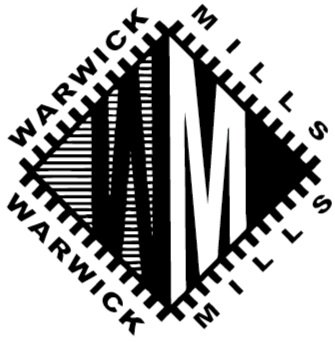
Warwick Mills Makes History
From Textile Manufacturing to the Forefront of Materials Engineering
-
Founded.
Focus on cotton-based textiles.
-
Incorporated.
Five locations: Jaffrey, Greenville, and New Ipswich, NH; Warwick, RI; and Maine. (Current New Ipswich headquarters is the site of the oldest operating textile mill in New Hampshire.)
Denim weaving begins.
-
Warwick Mills weaves the material used for the high-altitude helium weather balloon sponsored by National Geographic and the U.S. Army Air Corps: The Explorer II was designed to study conditions in the stratosphere and held the 20-year world record for the highest altitude: 72,395 feet.
-
Current ownership takes control of Warwick.
-
First to develop and produce parachute fabric for the U.S. Military during WWII.
Weaves material for blimps that patrolled the Pacific for Japanese submarines during World War II.
-
Warwick weaves breakthrough “Fiber X” (Nylon) for Dupont.
-
Warwick develops substrate material used in the inflatable flotation collars for the Apollo 17 missions.
-
Expand research and development of weaving techniques for protective fabric using Nylon, Kevlar® and Nomex®.
-
After the assassination attempt on President Reagan, concealable body armor for presidential use incorporates a specialized weave developed by Warwick.
-
Warwick creates a polyester material to reinforce diaphragms for Xerox machines.
Warwick develops substrate material to improve durability of wet/dry sandpaper.
-
Warwick incorporates full-production engineering services combined with existing textile manufacturing capabilities.
-
Charlies Howland joins as president of Warwick.
Focus shifts from textile production of roll goods to also providing high-performance flexible composites for a wider breadth of industries: military, industrial, aerospace, marine.
-
Warwick weaves sailcloth used on the HMS Rose, a 1776 ship replica.
-
Patents awarded for six weave and lamination processes.
-
Produce Nomex® diaphragm material for the turbo-chargers in Ford's F-Series trucks and pollution controllers in GM vehicles.
TurtleSkin protective material used in footwear to improve puncture and cut protection.
-
Warwick works with JPL and ILC to develop a multilayer materials approach for the impact airbags used on the NASA Pathfinder mission to Mars. The material produced was ultra durable, lightweight, and stood up to the challenging Mars environment.
The refurbished USS Constitution sails under its own power for the first time in 116 years, with sailcloth woven by Warwick.
Warwick develops glove material that protects users from cut, puncture, and needles.
Warwick develops lightweight protective chaps for chainsaw operators and logging operations.
-
Patent awarded for the tightest weave design ever achieved in high-strength fibers.
-
The space shuttle Endeavour lands successfully using a parachute made of high-strength fabric created by Warwick.
-
Warwick announces release of TurtleSkin Storm Glove, which provides the highest level of puncture, cut, and needlestick protection available in Warwick's line of TurtleSkin Safety Gloves.
Warwick wins New York State Department of Corrections bid for 40,000 pairs of TurtleSkin gloves.
-
Warwick fabric used for the impact airbags of Mars Exploration Rovers Spirit and Opportunity . The material stood up to the harsh environment on Mars' surface and weighed less than the fabric used in men's dress shirts.
Weaves sailcloth for Mirabella V, the largest single-masted ship in the world (twice the height of the Statue of Liberty).
Warwick creates the lightest, flame-retardant fabric used in military flight suits.
Warwick uses puncture technology to create the lightest, thinnest material used to prevent flat tires in bicycles: product is named SpinSkins.
Warwick creates the lightest, softest fabric to stop all North American snakebites: product is named SnakeArmor.
-
Supplies more than 15,000 US Marines in Iraq with soft leather gloves that also protect against both cut and puncture in the palm.
Launch of TurtleSkin website store for purchase of Turtleskin products: SnakeArmor, WaterArmor, Police Gloves, Safety Gloves, and SpinSkins.
Warwick designs new TurtleSkin Special Ops Glove to protect officers from high-temperature “flash” fires.
Develops lighter material that protects fire fighters in urban search and rescue missions (USAR): PBI TurtleSkin.
-
Warwick develops new ultralight, flexible technology for hull and ballonet for surveillance blimps designed to replace missile defense satellites.
Warwick begins shipment of TurtleSkin MFA (Metal-Flex Acessory) body armor. Upwards of 40,000 Dutch National Police officers use TurtleSkin MFA to protect from needles and edged weapons (knife, stab).
Warwick's WaterArmor protects UHP operators from potentially fatal water blasting injuries at pressures as high as 40,000 psi.
TurtleSkin Chem-Bio gloves combine a cut resistant outer shell with a chemical-resistant inner liner.
-
Laminate development and fabrication of protective shelters designed for chem-bio protection.
Warwick develops high-density, flexible material that offers lightweight puncture protection for select Schwalbe high-performance bicycle tires.
Under the direction of NASA Langley Research Center (LaRC) and Airborne Systems (formerly Irvin Aerospace), Warwick supplied the material used in the airbags that are a candidate landing technology for NASA's Orion Crew Exploration Vehicle.
-
TurtleSkin SoftPlate Body Armor receives Level IIIA certification from NIJ (National Institute of Justice). TurtleSkin's concealable ballistic vests offer high safety margins for ballistic and blunt trauma protection from handgun threats.
Development of inflatable flexible composites for torpedo recovery.
Full production of chem-bio laminates for protective shelters.
DuPont™, Kevlar® and Nomex® are trademarks or registered trademarks of E.I. du Pont de Nemours and Company.

